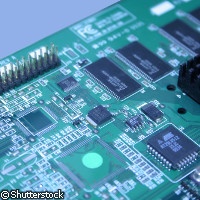Feb 22 2009
The EU-funded NANOXIDE ('Novel Nanoscale Devices based on functional Oxide Interfaces') project is supporting European researchers and inspiring physicists from the US to jointly develop the next wave of nanoelectronic devices. This Specific Targeted Research Project is funded under the Sixth Framework Programme (FP6) to the tune of EUR 2.97 million. The study's results were published in the journal Science.

These devices will be as small as two nanometres. To put this in perspective, that is roughly the distance between two atoms in a solid object. The NANOXIDE project is investigating and seeking to find methods of harnessing the properties of interfaces between various oxides that will then lead to the realisation of new nano-sized electronics.
What sets this effort apart is that the project partners have been able to create a platform that is capable of creating a wide variety of electronics ranging from high-density memory devices to the much desired transistors and computer processors. This range of creative diversity builds on previous work done by the team of researchers from the University of Augsburg in Germany and the University of Pittsburgh in the US.
This multitude of uses stems from a technique previously developed by the same team to fashion rewritable nanostructures at the interface between two insulating materials. Now, what these researchers have been able to achieve is to actually demonstrate the various applications of this process.
Professor Jeremy Levy, Professor of Physics and Astronomy from the University of Pittsburgh's School of Arts and Sciences, and senior author of the paper, said: 'We've demonstrated that we can make important technologies that are significantly smaller than existing devices and [that are] all from the same material.'
According to Professor Levy, this development will have many applications for the future. 'To sustain the development of smaller and faster computers, we will probably need to transition away from existing materials in the coming decade,' he explains. 'The memory bits in magnetic hard drives are about as small as they can get; silicon transistors will get increasingly difficult to miniaturise. We have created advanced storage and processing capability using the same material, presenting a totally new flexibility in building electronics.'
The paper highlights the ability of the technique to create nanoelectronics on demand. These can then be either modified or simply erased without the necessity of any complex procedures. It should be noted that this procedure can be tailored for field-effect transistors (FETs), which are a type of semiconductor largely considered to be building blocks of computers and electronics. What the team were able to achieve was to create a transistor they have fondly named 'SketchFET' - the size of which is an astonishing two nanometres, smaller than the most advanced silicon transistor, which measures 45 nanometres.
This new transistor is arousing the curiosity of many in the industry. Dr Alexander Bratkovsky, a senior scientist in the Information and Quantum Systems Lab at HP Labs, the central research facility for Hewlett-Packard, was very intrigued with the device.
'The channel current-voltage characteristics of the SketchFET look very close to a silicon transistor and its characteristics look promising. In terms of simplicity, it's striking. Transistors are typically laid out in many layers. The whole idea that you can take a single buried oxide interface and form structures almost by writing it in a two-dimensional layout is very interesting,' Dr Bratkovsky said. 'It's an elegant piece of research with a lot of potential for electronics and sensors. It indicates that there could be other interesting developments and uses for oxide interfaces with an unexpectedly high mobility of carriers localised near the interface.'
The idea for the process originated from a visit Professor Levy paid to the University of Augsburg where Professor Jochen Mannhart and his student Stefan Thiel (co-authors of the paper) showed him how the entire interface could be switched between a conducting and insulating state. Professor Levy thought of adapting the process to nanoscale dimensions and his student and co-author, Cheng Cen, brought the idea to fruition.
Source: Cordis